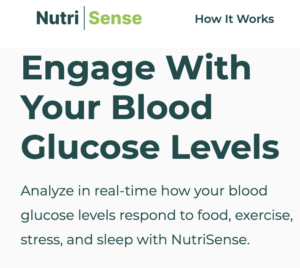Artificial Intelligence, Public Trust, and Public Health
The CDC article Artificial Intelligence, Public Trust, and Public Health (CDC Genomics and Precision Health, September 17, 2020) explains:
As part of the Data Modernization Initiative, CDC is supporting strategic innovations in data science using artificial intelligence and machine learning (Ai/ML). Ai/ML is the practice of using mathematics with computers to learn from a wide range of data and make predictions about the health of populations. By using Ai/ML, CDC can maximize insights from data to improve disease detection, mitigation, and elimination. Ai/ML applications could support public health surveillance, research and, ultimately, decision making, ushering a new era of precision public health.
Health care analysts have long wished for “Big Data” to show the way for lowering health care costs. But Big Data isn’t necessarily smart data. Someone or some algorithm has to sort through, categorize, and analyze vast health care information to look for patterns and relationships.
In Beware the AI delusion (Fast Company, 2018), Gary Smith (author of The AI Delusion) concludes:
In the age of AI and big data, the real danger is not that computers are smarter than us, but that we think computers are smarter than us and therefore trust computers to make important decisions for us. We should not be intimidated into thinking that computers are infallible. Let’s trust ourselves to judge whether statistical patterns make sense and are therefore potentially useful, or are merely coincidental and therefore fleeting and useless.
Technology and health care companies are investing in smarter management of health care information. Microsoft Makes a $16 Billion Entry Into Health Care AI (Wired, April 13, 2021) outlines the potential for Nuance, a medical transcription service purchased by Microsoft, to expand:
Health care is widely seen as a key industry for applied AI. Numerous research studies show the potential for AI algorithms to spot disease in images or mine medical records for insights into treatment paths. And while challenges remain, like getting doctors to trust the technology or preventing bias that creeps in when the data used to train medical algorithms is insufficiently diverse, an increasing amount of AI is likely to be deployed in health care in coming years.
In this YouTube video from PYTORCH DEVCON 19, Andrew Trask outlines Privacy Preserving AI – Andrew Trask, OpenMined
How Big is A.I.’s Future in Health Care?
How many medical device and services startups are using A.I.? Likely all of them, given the loose definition of A.I. and the appeal to investors who expect that A.I. will bring miracles. Japan’s AI Medical Service listed among the World Economic Forum’s Tech Pioneers:
AI Medical Service is a Tokyo-based start-up dedicated solely to the development and distribution of endoscopic artificial intelligence (AI). It is striving to achieve its mission to eliminate gastrointestinal cancers. According to research, up to 25.8% of cancers and lesions are overlooked during endoscopic practices. Endoscopic AI will assist physicians in reducing the number of lesions being overlooked during such procedures, which will allow for early treatment of gastrointestinal diseases, resulting in lower treatment costs and mortality rates.
Also listed among WEF Tech Pioneers is January, a firm with technology to analyze “blood sugar and diet for diabetes control and prevention”:
January AI is focused on improving outcomes for the 122 million people on the diabetes spectrum through a multi-omic approach to better health. By harnessing science, medicine and machine learning, January’s advanced artificial intelligence (AI) technology discovers how diet and activity affect people differently and provides personalized recommendations to move them to a healthier state.
There are many other firms in this “metabolic health” space and most rely on natural intelligence instead of artificial intelligence. The Center for Disease Control (CDC) National Diabetes Statistics Report, 2020 says:
- 34.2 million Americans—just over 1 in 10—have diabetes.
- 88 million American adults—approximately 1 in 3—have prediabetes.
New medications claim to reduce obesity and diabetes, or to better treat diabetes. But a growing range of medical researchers, doctors, nutritionists and ex-diabetics make the case that “nutritional intervention” (that is, dietary changes) can quickly reverse pre-diabetes and put type 2 diabetes into remission. Obesity and diabetes they argue are a consequence of poor metabolic health. Some people, many people in fact, are unable to eat sugar, fructose, starchy foods, bread, pasta without stressing their metabolic system leading to insulin resistance and a host of chronic conditions.
A.I. systems are being developed to record individual metabolic changes and provide reports to that can help people better understand how what they eat impacts their metabolism. People overweight, pre-diabetic, or diabetic can use a Continuous Glucose Monitor (CGM) and check the app to see how their metabolism responds to different foods, times, stress, and exercise.

Nutri | Sense offers tools for monitoring your metabolism:
When you join NutriSense, you’ll receive a continuous glucose monitor (CGM) that tracks your glucose 24/7. Our program offers expert guidance to help you interpret that data to reach your full health potential. …
Your CGM shows your blood glucose levels. The NutriSense app lets you track your daily activity to see how food, sleep, exercise, and stress impact your glucose.
You can log or import this data, into the NutriSense App, to see the effect on your blood glucose levels as soon as it happens.

In the LowCarbMD Podcast, Episode 184: Kara Collier, at 37 minutes in, Kara Collier discusses NutriSense development of A.I. tooks to automate some of the CGM reporting for users.
An earlier Economic Thinking post, Nutrition Notes: Gadgets for Looking Inside (February 4, 2021) reviews various technologies for measuring body fat, visceral fat, and sleep quality.
The Amazon Halo is worn on the wrist but doesn’t tell time. It measures sleep quality and body fat (via pictures and AI) For me, the Halo body fat measures matched the FitIndex scale. However Eufy reports my visceral fat stuck at 16 (not good) and hasn’t changed since last April (maybe a later or more expensive model works better?). The Fitindex scale reports my visceral fat now at 8.
Among challenges to status quo medical care, and to deployment of artificial intelligence technologies is the ongoing politicization of health care and “regulatory capture” of federal nutritional programs and guidelines. This is discussed (and documented) by the Nutrition Coalition. Basically, a combination of inertia and food industry pressure blocks recent research on reversing type 2 diabetes and other chronic conditions through nutritional changes.
More research and discussion at DietDoctor.com, Low Carb Down Under website and YouTube presentations, Low Carb USA podcasts and posts, and the Society of Metabolic Health Practitioners (SMHP). And boatloads of Dr. Berg videos outline Keto/low-carb/intermittent fasting success stories.
Again, many Economic Thinking nutrition and public health posts here.
